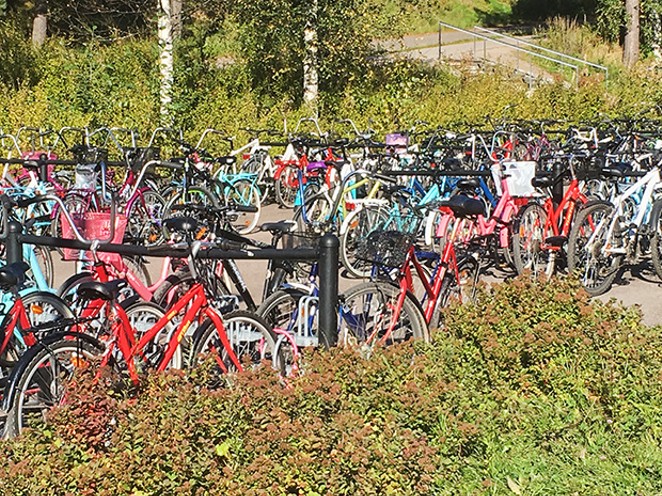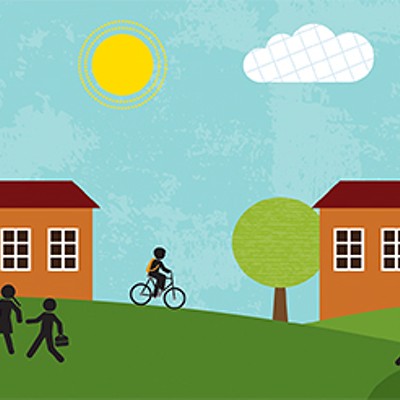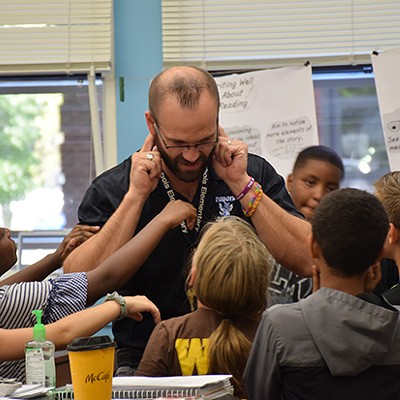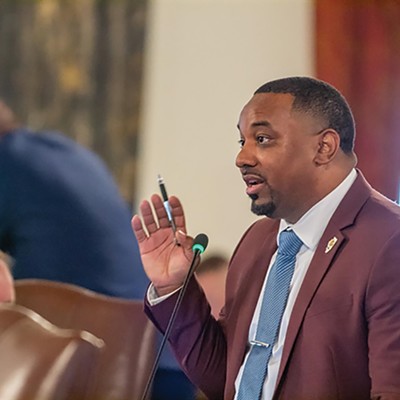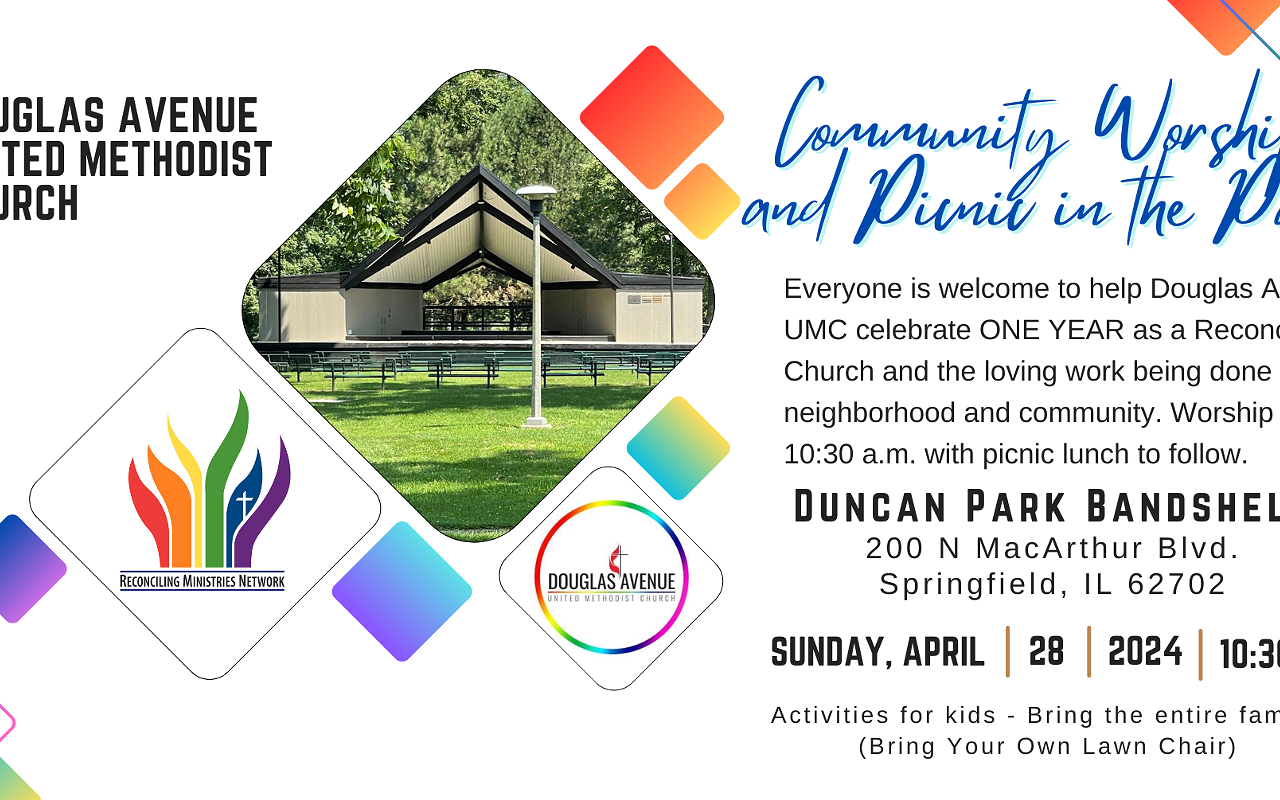
When I was offered the opportunity to participate in an education study tour of the Finland school system, sponsored by the National Education Association Foundation, I welcomed the opportunity to see what is known as the No. 1 education system in the world. I had never put Finland on my bucket list, but now, I suggest everyone should.
I discovered a beautiful country and a school system that offers some ingredients we should consider. I came home, though, proud of our public schools and what happens every day to support students.
Helsinki, the capital, sits at the southern tip of Finland, surrounded by the sparkling blue Baltic Sea. Near one of its many harbors, vendors set up under orange or white tents to sell their goods: Baltic-amber jewelry, silver jewelry, woolen goods, leather items, etc. Food vendors offer up such items as grilled salmon, reindeer hotdogs, sugary pastries and lingonberry or cloudberry jam.
The city is very easy to walk – from the city center with its series of indoor shopping centers and Eero Saarinen-designed train station to the esplanade – a parklike setting bordered by two large streets and lined with shops and restaurants. It’s called the Champs Elysees of Helsinki.
Culture
To understand the schools, it is helpful to understand the culture. One is struck by how quiet the Finnish are – restaurants and stores just aren’t as noisy as ours. Even the airport was eerily quiet in the middle of a Saturday afternoon when we landed.
Trust is embedded in the Finnish culture. As one speaker at the Ministry of Education explained, “We trust – we trust our police, we trust our teachers, we trust our politicians. That’s just part of what we believe.”
Equity drives their belief system, too – equity of resources and funding to schools, equally staffed schools and language immersion for all immigrants needing to learn Finnish, one of the most difficult languages in the world. No matter one’s socioeconomic status, resources are equitable, including free health care and free public schools. There is no tuition for higher education – even for college students from foreign countries.
Even though health care and education are free, Finland is not a socialist country, but rather a democracy run by a president, prime minister and a parliament. There are as many as nine political parties.
School system
Today, Finland’s school system has earned the distinction of being #1 in the world, determined by the PISA test (Programme for International Student Assessment), a test given randomly every three years to 15-year-olds. But Finland was not always first, and in the 1970s leaders recognized that their school system needed to be much better. Stakeholders – including politicians, union leaders, teachers, university faculty and others – began deep conversation. This is the first lesson we should learn from Finland – bring experts and practitioners and representatives of all stakeholders together, and then engage in meaningful conversation about education. Finland’s group dug deeply into several key questions: What is the value of education? Why is education important for our future as a nation? What is the main objective of our schools? What should be taught?
They even say that they looked at the research that we in the U.S. have done and then put those recommendations in place.
They designed a comprehensive system with each component working in tandem to create the overall system. The second lesson they teach us: don’t focus on just one item and expect that to make the difference; it is the combination of many items working together that creates an excellent system. That means focusing on what is needed in early childhood through higher education, teacher training and recruitment, salary and benefits, curriculum, school experiences, time in school for both the student and teacher, and resources to accomplish all the areas needed.
In Finland,
• Public education is valued. The Finns would not entertain any serious conversation about private schools, vouchers or charter schools.
• Funding is equal for all schools so there is no talk of good or bad schools.
• Students attend their neighborhood school.
• Education is promoted, honored and seen as a lifelong endeavor.
• Teachers are given full autonomy as experts to make decisions about what is best for students.
• Becoming a teacher is highly competitive; teaching is considered the most prestigious profession and teachers are given ultimate respect.
• A national core curriculum outlines the skills and goals for educators to use in developing the lessons for students.
• There are no standardized tests that students must take except for a matriculation exam at the end of their schooling.
• Teachers are not evaluated, and the Department of Ministry does not grade, monitor or oversee schools.
Trust is given to the highly educated teachers and to the schools to do what is needed.
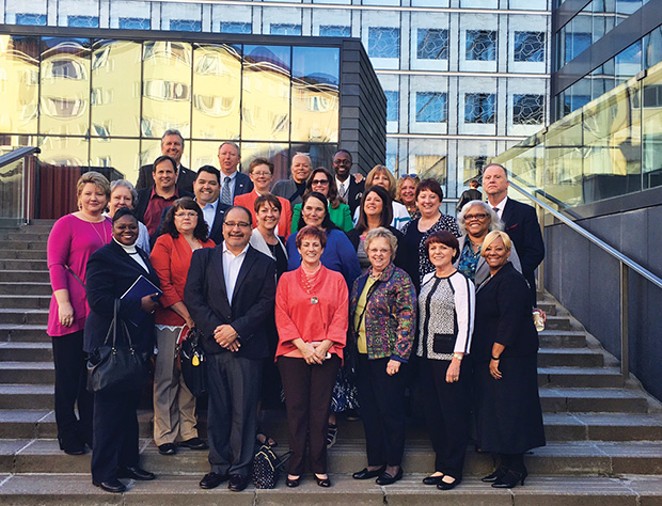
Schools
Let’s take a look at their school structure.
School is in session 190 days, five days a week, but the day is shorter. Most students finish by 1 p.m. or 2 p.m. each day.
Kindergarten (what we know as preschool) is run by the municipalities and is paid for by parents. Compulsory preschool (what we call kindergarten) starts at age 6.
Throughout their schooling, students take tests within their classes, but there are no standardized tests, except for a matriculation exam upon completion of school. The matriculation exam might be used for entrance into college but it is only one indicator, not the determinant, for acceptance, unlike our overemphasis on an ACT or SAT score.
Students begin first grade at age 7, and grades 1-6 look somewhat like ours. Teachers teach most of the subjects, and students interact in groups or work on individual lessons. There are some differences, though, compared to our system. In the schools we visited, students walked around in their socks, shoes stowed away. The principal said it was a way to keep the school clean. Children in early grades learn vocational skills – in one school the woodworking room was set up with saws stacked on a table for the next class coming in – a group of second-graders. Another class was learning about textiles and making woolen items. Looking at skills and possible career interests start at an early age so that students begin thinking about their futures.
Finnish and Swedish are the two main languages and are taught along with English; almost everyone in Finland speaks English.
Grades 7-9, as in the U.S, are arranged by subjects. Again, vocational subjects such as woodworking, welding, textiles, etc. are incorporated into studies much more widely than in the U.S.
The end of ninth grade is a key turning point for students. It is then that they choose their next step: stay for the 10th grade (rare), go to upper secondary for general studies (leading to the university) or for vocational studies (leading to an apprenticeship, job and possible university studies). There is no stigma in taking the vocational route. Whatever choice is made does not close off future studies since adult education is promoted.
Upper secondary schools do not divide students into grades; rather, students choose subjects that fit with their interests, skills and career interests. It is similar to our community college arrangement. Students complete their courses within two to four years; at the end of this time they take a matriculation exam, the only required test.
Teacher prep
Becoming a teacher is more rigorous than becoming a doctor. Teachers are not chosen by a high standardized test score (they don’t believe in standardized tests), but rather by a series of requirements: interviews, team work that is observed by professors analyzing a person’s collaboration and interaction skills, and finally a four-hour writing assignment, formulating an essay based on a required 250 pages of reading that applicants are given a month to read. The competition is high and very selective in the nine university teacher prep programs. For example, the University of Helsinki teacher prep program had 1,800 applicants and only 120 were chosen last year.
A short training program like Teach for America, which trains teachers in six weeks and then assigns them to schools, would not be accepted by the Finns. Their teachers must complete a very intense program that lasts 5 years, culminating with a master’s degree. The last year of the program includes student teaching at a teacher training school where student teachers are mentored by trained teachers.
The teachers in the vocational programs are highly skilled and are required to have a degree plus three years of work in their field.
Beginning teachers earn around $32,000 in U.S. dollars, but, as one teacher said, “We don’t make a lot of money, but we are given autonomy, are considered experts and are highly respected. Those make all the difference.”
Union
Finland is highly unionized, and the teacher trade union OAJ keeps a steady membership of around 95 percent. The union is included in all committees, task forces and discussions with the Ministry of Education and bargains a basic contract that is followed by the municipalities. Collaboration in schools is a basic tenet and also embraced at the OAJ union/Ministry leadership level.
Other unions exist for other trades and unionism is an accepted part of the Finnish culture. Bashing of unions would equate to bashing of the professionals within each union and so doesn’t happen.
Trust and equity
Everything comes back to these two fundamental premises. Trust is obvious when observing the schools and students. At one school, kids’ bicycles lined one side of the building – all unlocked. Students, coming out for recess, roamed into the adjoining woods, or got out their cellphones to text or play a game. No teachers were on playground duty supervising. Students aren’t in school a full day, and when the principal was asked if parents objected that their children were home by 1 p.m. or 2 p.m., the principal said, “The young children go to day care, but otherwise, kids go home. The parents don’t object; that’s how it has always been – when I was a kid it was the same.”
Equity drives the decisions about each student, and each student is looked at as an individual with varying needs. If a child needs special help, then it is to be determined early and resources are to be provided. If an immigrant student doesn’t speak Finnish, then a language immersion program is offered by the municipality. Students are not put into ability groups, and there aren’t separate special ed or gifted classes. Instead, each student is looked at as an individual and the teacher designs each student’s lesson to help hone skills and build knowledge. This is a major difference from our system. In our schools, students take subjects and all study basically the same unit, with the same homework assignments. In Finland, students in upper secondary study a subject and their lessons and homework might all be different, based on each student’s needs, interests and ability. It is up to the teacher to then find the ways for all students to work in teams and collaborate on projects.
What Finland faces going forward
The Finnish economy has fallen, and many comment on how bad it is. This has raised questions for the Finns on how to maintain equity for all and continue the practice of free higher education. There is now a movement to start charging tuition for foreign students in the universities.
Finland was surprised when they reached the status of being No. 1 in the world in their education system, and they immediately reviewed and analyzed why, instead of just resting on their laurels. They are continuing to monitor what needs to occur in order to stay on top. This was made a goal when in 2012 their PISA scores fell somewhat. Although they still maintained the No. 1 spot in all of Europe, they understand that constant collaboration among the stakeholders and the education experts must be continued to fine tune the work.
This year that has led to a new approach called phenomenon-based education – looking at skill goals first and then subject goals, designing multidisciplinary activities and having students participate in determining their own learning and ways to be assessed. As a teacher said, “It is not just going through a textbook and mastering a lesson.”
They are faced with a growing diversity. In the fall of 2015, 30,000 immigrants came into Finland from areas such as Syria, Bosnia, Ethiopia and Russia. This has put a strain on the municipalities in ensuring language immersion continues for all.
Be proud of our schools
Our U.S. public schools do exceptional work for students without the funding and equity that Finland provides. Some of the same things are happening here as in Finland: students arranged in classes, studying many of the same subjects. But, unlike Finland, we offer students extracurricular activities, sports and clubs.
Final lessons
The question often asked is whether we in the U.S. could create the system that Finland has. Probably not on such a large scale, since our population is so much larger. But, as one prominent Finnish educator Pasi Sahlburg recommends in his book Finnish Lessons 2.0, start with a state.
We know the ingredients needed: Finland took our ideas and implemented them in a comprehensive way.
The question remains, though, if we truly have the motivation and interest to create an equitable education system. Unfortunately, we know there are the “have” and the “have not” schools here in Illinois. Funding is based on one’s ZIP code and is not equitable throughout the state. That means staffing, resources and programs are unequal for students, teachers and communities, something that would not be tolerated in Finland.
Instead of designing a system using the expertise of the stakeholders, deep conversation, looking at what students need and then determining the right funding, we spend countless hours talking about tweaking a funding formula that hasn’t worked for decades and does not address student needs.
Too many reformers propose half-baked ideas as a panacea for our schools, ignoring what the Finns know: it takes many pieces, properly designed and working together, to create a school system. That is the biggest lesson we could learn from Finland.
Cinda Klickna is a former District 186 English teacher and now serves as president of the Illinois Education Association. She has been a freelance contributor to IT for many years.

